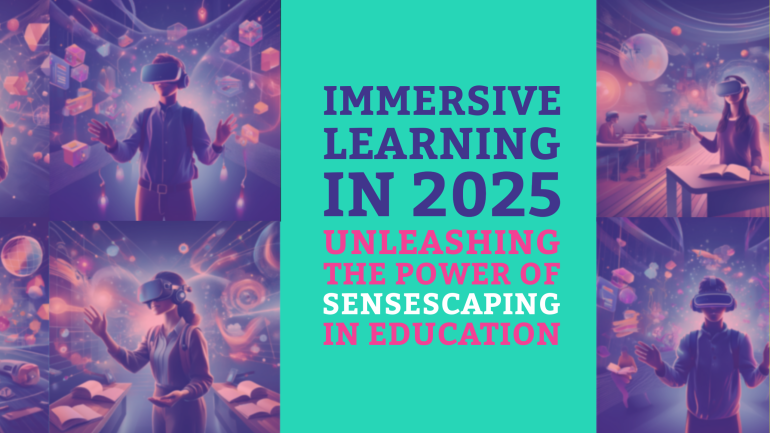Table of Contents
TL;DR: Embracing Visionary Leadership in Educational Institutions
- Empowering Leadership: Visionary leaders in educational institutions empower their teams by providing support, resources, and guidance to help them reach their full potential.
- Fostering Innovation: Creating a culture of innovation within the institution encourages creativity, problem-solving, and continuous improvement in teaching and learning practices.
- Strategic Planning: Visionary leaders set clear goals, develop long-term strategies, and align the institution’s resources to achieve the vision and mission of the educational institution.
Leadership in educational institutions plays a crucial role in shaping the future of students and driving overall success. Developing visionary leadership within these institutions is crucial to navigate through challenges, implement innovative strategies, and inspire positive change. Visionary leaders are visionaries who anticipate trends, set long-term goals, and motivate others towards a shared vision.
Characteristics of Visionary Leaders in Education
Innovation and Creativity
Education visionary leaders possess a keen sense of innovation and creativity. They are constantly seeking new ways to enhance the learning experience for students, whether through the implementation of technology, project-based learning, or interdisciplinary approaches. These leaders are not afraid to challenge traditional norms and think outside the box to bring about positive change in their institutions.
Strategic Thinking and Foresight
Education visionary leaders excel in strategic thinking and foresight. They possess the ability to see the bigger picture, anticipate future trends, and formulate long-term plans that align with the goals and values of their educational institutions. These leaders make well-informed decisions based on data, research, and a deep understanding of the educational landscape.
Plus, Education visionary leaders are adept at navigating uncertainties and complexities, turning challenges into opportunities for growth and development. Their strategic mindset allows them to lead their institutions through times of change with confidence and clarity, ensuring that the vision for the future remains intact.
Cultivating Visionary Leadership
Even in the ever-evolving landscape of educational institutions, visionary leadership remains a cornerstone for success. Visionary leaders possess the ability to inspire and guide others towards a shared vision of excellence. They are forward-thinkers who anticipate trends, embrace innovation, and drive progress. To cultivate such leadership within educational institutions, it is important to focus on personal development and self-awareness.
Personal Development and Self-Awareness
Any aspiring visionary leader must prioritize personal development and self-awareness. This involves a deep understanding of one’s strengths, weaknesses, values, and beliefs. Self-awareness allows leaders to make well-informed decisions, build authentic relationships, and effectively navigate challenges. By continuously investing in personal growth through reflection, feedback, and learning opportunities, leaders can enhance their leadership capabilities and inspire others to reach their full potential.
Fostering a Culture of Continuous Learning
Any educational institution committed to cultivating visionary leadership must foster a culture of continuous learning. This entails creating an environment where innovation, collaboration, and professional development are valued and encouraged. Leaders play a pivotal role in modeling a commitment to lifelong learning and empowering others to pursue growth opportunities. By prioritizing learning at all levels of the organization, institutions can adapt to change, drive excellence, and effectively prepare students for the future.
Cultivating a culture of continuous learning involves providing access to training programs, mentorship opportunities, and resources that support ongoing development. By embracing a mindset of curiosity and growth, leaders can inspire a community of learners and foster a dynamic educational environment that thrives on innovation and adaptability.
Strategic Planning for Educational Leaders
Once again, strategic planning is pivotal for educational leaders to steer their institutions towards success in today’s dynamic educational landscape. By formulating a comprehensive strategic plan, leaders can effectively manage resources, adapt to changes, and achieve long-term objectives.
Setting Clear Goals and Objectives
On the journey to visionary leadership, setting clear goals and objectives is the cornerstone of strategic planning. Educational leaders must delineate specific, measurable, achievable, relevant, and time-bound (SMART) goals that align with the institution’s vision. By doing so, leaders provide a roadmap for their team, fostering a sense of direction and purpose.
Aligning Vision with Institutional Mission
One way for educational leaders to ensure success is by aligning their vision with the institution’s mission. This involves integrating the overarching goals and values of the institution with the long-term vision set forth by the leader. By aligning vision with institutional mission, leaders create synergy between the aspirational aspects of their leadership and the foundational principles of the institution.
Educational leaders must communicate this alignment effectively to all stakeholders, ensuring a shared understanding of how the institution’s mission is interconnected with the visionary direction set by the leader. This alignment fosters a sense of unity and purpose among faculty, staff, students, and the wider community, driving collective efforts towards the institution’s strategic goals.
Communicating the Vision
Despite the dynamic nature of educational institutions, the foundation of visionary leadership lies in effectively communicating the vision. Leaders must articulate a clear and compelling vision that inspires and motivates all stakeholders towards a common goal. This chapter probes into strategies that can help educational leaders communicate their vision effectively and build a strong foundation for success.
Engaging Stakeholders
Any successful implementation of a vision in an educational institution requires the active engagement of all stakeholders. Leaders must involve teachers, students, parents, administrators, and the community in the vision-building process. By encouraging participation and valuing input from all stakeholders, leaders can ensure a sense of ownership and commitment to the shared vision. Open communication channels, feedback mechanisms, and regular updates on progress are vital in keeping stakeholders engaged and motivated.
Transparency and Building Trust
To establish a culture of transparency and build trust among stakeholders, leaders must prioritize open and honest communication. Transparency involves sharing information, decision-making processes, and outcomes openly with all stakeholders. Building trust requires consistency, integrity, and a commitment to ethical practices. When stakeholders perceive transparency and trustworthiness in leadership, they are more likely to support the vision and work towards its realization.
Implementing the Vision
Change Management Strategies
Management plays a crucial role in implementing the vision of a visionary leadership in educational institutions. Change management strategies are vital to navigate the transition towards the desired state. Communication, involvement of key stakeholders, and creating a sense of urgency are vital components of successful change management. It is important for leaders to address resistance to change by fostering a culture of openness and transparency, where feedback is welcomed and acted upon. Additionally, providing adequate resources and support to those directly impacted by the changes is vital for a smooth transition.
Measuring Progress and Adapting Plans
Progress monitoring is key to ensuring the successful implementation of the vision. Leaders should establish clear goals and milestones to measure progress towards the desired outcomes. Regular assessment and feedback mechanisms help in identifying bottlenecks and making necessary adjustments in the plans. It is crucial for leaders to be agile and adaptable, willing to embrace changes as needed to stay on course towards the vision.
The ability to measure progress and adapt plans accordingly is a dynamic process. Through continuous evaluation and feedback, leaders can effectively track the impact of their actions and make informed decisions to steer the institution in the right direction.
Challenges in Achieving Visionary Leadership
Resistance to Change
For visionary leaders in educational institutions, overcoming resistance to change is a common challenge. Any effort to introduce new ideas, policies, or practices can be met with opposition from stakeholders who are comfortable with the status quo. This resistance can stem from a variety of factors, including fear of the unknown, lack of understanding about the benefits of change, or a sense of loss of control.
Balancing Innovation with Tradition
For visionary leaders, striking the right balance between fostering innovation and maintaining traditional values and practices can be a delicate task. For educational institutions rooted in long-standing traditions, embracing change and innovation can be seen as a threat to their identity and history. However, it is vital to evolve and adapt to meet the needs of a rapidly changing world.
As leaders navigate this challenge, it is crucial to communicate the importance of preserving core values while also embracing innovation. By involving stakeholders in the decision-making process and highlighting how innovation can enhance, rather than replace, traditions, leaders can build a culture of continuous improvement and forward-thinking in their educational institutions.
Summing up
With these considerations in mind, it is evident that building visionary leadership in educational institutions is crucial for fostering innovation, growth, and success. By cultivating a culture of forward-thinking, adaptability, and collaboration, leaders can inspire their teams to embrace change and drive meaningful progress in the ever-evolving field of education.
Empowering leaders to think strategically, communicate effectively, and prioritize student-centered outcomes will not only transform educational institutions but also empower future generations to thrive in a rapidly changing world. By embracing visionary leadership principles, educational institutions can pave the way for a brighter and more promising future for all stakeholders involved.
FAQ
Q: What is visionary leadership in educational institutions?
A: Visionary leadership in educational institutions is a leadership style that involves crafting and communicating a clear and compelling vision for the future of the institution. It requires the leader to inspire and motivate others to work towards achieving that vision, while also being flexible and adaptive to changes in the educational landscape.
Q: Why is visionary leadership important in educational institutions?
A: Visionary leadership is important in educational institutions because it sets a direction for the institution to follow, inspires innovation and creativity, and fosters a culture of continuous improvement. It helps in aligning the efforts of all stakeholders towards common goals and drives positive change within the institution.
Q: How can one develop visionary leadership skills in educational institutions?
A: Developing visionary leadership skills in educational institutions requires self-awareness, continuous learning, and effective communication. Leaders should be open to new ideas, willing to take calculated risks, and able to inspire and motivate others. Building a strong team, fostering a culture of collaboration, and staying informed about current trends in education are also key aspects of developing visionary leadership skills.




